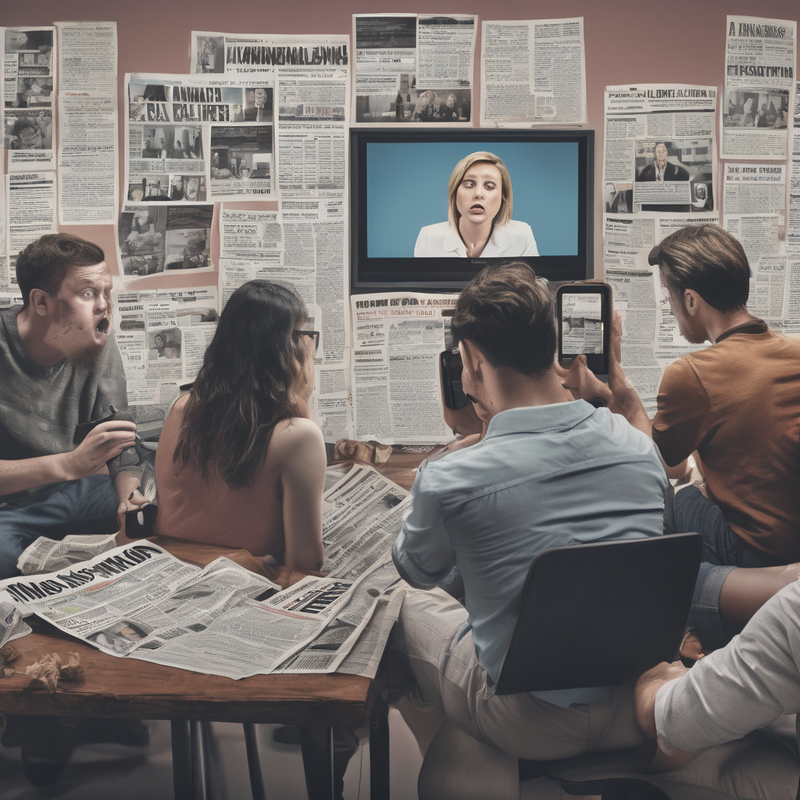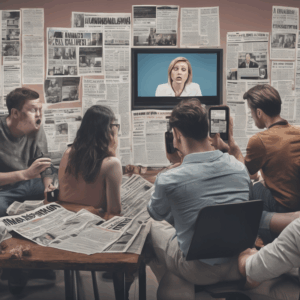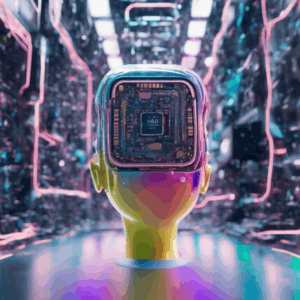
Trump’s AI-Generated Storm: A Study of Misinformation and Public Response ✈️💧
In a world where truth often feels as malleable as clay in the hands of a master sculptor, former President Donald Trump recently reignited a firestorm of controversy by reposting an AI-generated video depicting a plane dumping sludge on protesters. As though fanning the flames of a wildfire, this move raises critical questions about the intersection of technology, public perception, and the implications of misinformation 🌀.
There’s a bitter irony in this situation; the man once dubbed a disruptor of traditional politics now appears to have become a digital magician, conjuring visuals that blur the lines between reality and fiction. While it is unsurprising for a public figure to seek to manipulate media narratives, the tool of choice—a reality-distorting AI—poses profound questions about the ethics of digital content in an age when fact-checking feels like trying to catch smoke with bare hands.
The Context of Protest and Political Manipulation
The video was posted amidst a wave of protest against various issues, including environmental policies—an increasingly urgent topic in today’s climate. As is often the case, the contrasting values of environmental stewardship and economic progress clash like thunderheads in a summer storm. Protests, once heralded as the heartbeat of democracy, now navigate a landscape where messages are not just debated but, as we see here, weaponized ⚔️.
Consider this: on one side, we have citizens advocating for the planet—activists aiming to protect ecosystems, likened to gardeners desperately tending to a wilting flower. On the other, we encounter a digital onslaught where opponents leverage technology as a tool for unanchored storytelling, reshaping perceptions faster than one can say “fake news.”
What remains perplexingly clear is how swiftly narrative shifts occur in our digital age. An AI-generated video, designed to provoke outrage, can become a rallying cry for supporters while simultaneously being a flashpoint of deeper societal divisions. The stark contrast between reality and its manipulation feels like watching an artist create a beautiful landscape only to smear it with dark sludge—both captivating and profoundly shocking.
The Digital Age: Implications of AI and Misinformation
AI technology presents a double-edged sword. While it offers innovations and efficiencies, it also opens Pandora’s box for misinformation. Researchers warn that the ability to create hyper-realistic content leads society down a treacherous path where distinguishing truth from deception becomes akin to finding a needle in a haystack. Just how do we navigate these murky waters? The film noir of misinformation casts shadows too long for many to escape.
The juxtaposition of a former president’s social media prowess with advanced AI technology has exposed fissures that suggest the public may no longer trust their own eyes. The tension between perceived authority and manipulated visuals evokes an unsettling realization: trust in information is eroding, leaving behind a chasm where once vibrant dialogues about policy might find themselves drowned in vitriol and noise.
The Generational Divide: Trust and Skepticism
Interestingly, responses to video manipulation reveal a generational divide. For younger viewers, raised in a digital ecosystem, manipulation may come as no surprise—a byproduct of their standard browsing fare. Like a dolphin weaving effortlessly through waves, they navigate misinformation with a mix of skepticism and resilience. Conversely, older demographics may grasp onto traditional narratives harder than barnacles clinging to a ship’s hull, seeking comfort in familiar frames of reference.
The Role of Digital Literacy
As we grapple with the implications of AI-generated content, the importance of digital literacy has never been greater. Educating the public on how to discern fact from fiction in the digital landscape is essential—arguably an obligation much like teaching literacy itself. Just as one learns to read with understanding, so too must individuals learn to consume content critically.
Tools for debunking misinformation, fact-checking organizations, and public campaigns promoting digital literacy could serve as the compass guiding society through these uncharted waters. Imagine, if you will, a world where social media platforms are as dedicated to promoting factual integrity as they are to engagement—transforming the landscape from one steeped in mistrust into an oasis of informed discourse 🗣️.
Seeking Truth Amidst Chaos
As the sludge-filled planes fly through the minds of an eager public, it serves as a reminder: the truth may be a fragile flower, struggling to bloom. The essence of democracy demands sound judgment, supported by accurate information and a populace equipped with the skills to wade through the muck. If we continue to allow the boundaries between fact and fiction to erode, we risk losing not only informed discourse but the very foundation of democracy itself.
Thus, the question lingers: will we choose to engage with complexity and defend the principles of truth, or will we allow ourselves to be swept away in a deluge of digital disinformation, where planes of sludge rain down not only on protesters but on the very essence of our civic responsibilities? 💭
What is clear is this: the issues raised by Trump’s reposted video extend far beyond mere entertainment. They beckon us to reflect; they challenge us to reexamine how we perceive our public figures and the tools they wield. In a digital era overshadowed by artificial narratives, our ability to discern the truth is more crucial than ever.






